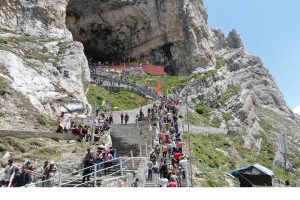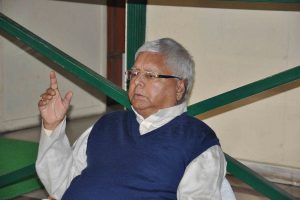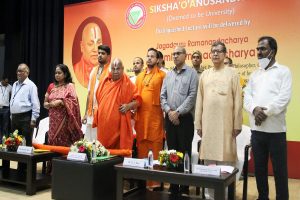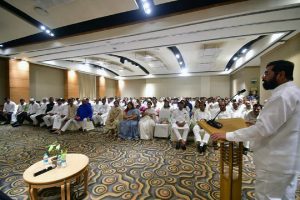During the British Raj in India, there were artists such as Thomas and William Daniell, James Wales, William Hodges and others, who painted the wonders of the country. There are not many people who have traced the provenance of some of those paintings because most of them went back to England from India with their respective artists.
Certain works of art were sold to private collectors; although Maurice Shellim, a British doctor who lived in Calcutta for many years, enlightened people on the work carried out in India by British artists. A few paintings were bought by Shellim and he viewed some of the others in England, thus, enabling him to write about them. Shellim even visited a few locales, which had been painted or sketched by the British artists, who travelled in India.
Kattra Masjid, in Bengal’s Murshidabad, was depicted in a painting by William Hodges (1744-1797) and that was purchased by Shellim. When this oil on canvas painting — 23.5 by 27.5 inches — is viewed, it takes one to a dreamy past. In the foreground are a few Muslim women whose heads are draped with a prominent head-dress, customary to the community. The architectural details of the Kattra Masjid have been depicted to perfection by Hodges and will leave a connoisseur, spellbound; the minarets succeed one another, into the distance, appearing smaller as they disappear.
Advertisement
The artist’s attention to detail is superb and a question assails one, why can’t the Government of West Bengal apply to Unesco and bestow this wondrous site with a heritage status? The Muslim seminary, in Murshidabad, is located about 100 kilometres from Kolkata.
The Kattra Masjid houses the tomb of Nawab Murshid Quili Khan. The Masjid was built between 1723 and 1724 and is located on the eastern side of the city. Its importance — notwithstanding the tomb — is also as a great centre of Islamic learning. The Kattra Masjid’s most striking features are the two large corner towers with holes for musketry — one of the two towers were painted, in meticulous detail, by Hodges, in his awesome depiction of the mosque.
Murshidabad is divided into almost two equal portions by the Bhagirathi, an ancient channel of the Ganga. After the conquest of Bengal by the British, Murshidabad remained, for some time, the seat of administration. It was in 1790 that Lord Cornwallis removed the entire revenue and judicial staff to Calcutta.
There were many locations in India that intrigued William Hodges. He devoted much of his time at Tanjore, where he was enchanted by a temple. His tours in Bengal explain his visit to Murshidabad. The accomplished artist’s fascinating odyssey began with Captain Cook’s second voyage, when he was hired as an official draughtsman.
It was in 1778 when Warren Hastings persuaded him to visit India — Hodges lived here for six years and amassed a small fortune by virtue of his paintings. The painting of the Kattra Masjid was done during that time.
His wealth enabled him to build a studio, in London’s Mayfair, when he returned to England. In 1790, he toured Europe and St Petersburg but critics across the world wrote that Hodges’ best productions were the views he brought from India in Travels in India. Hodges died shortly thereafter in 1797.
Shellim who adored the wonders of India’s sights was, perhaps, one of the few personalities who understood India as a connoisseur of art. Our heritage buildings and natural wealth are unique and some of them were actually projected by a legion of artists. The Kattra Masjid, through Hodges’ art, has identified one of our country’s magnificent monuments.
Shellim’s expressive words explain the visitations of artists who left home to paint the beauty and wealth of the sub-continent, “Hindustan! Many tongued, many handed, Why camest thou to dazzle our eyes. To lend all thy lures, When we landed, Thy sun, and thy scent, and thy skies.”
Advertisement







